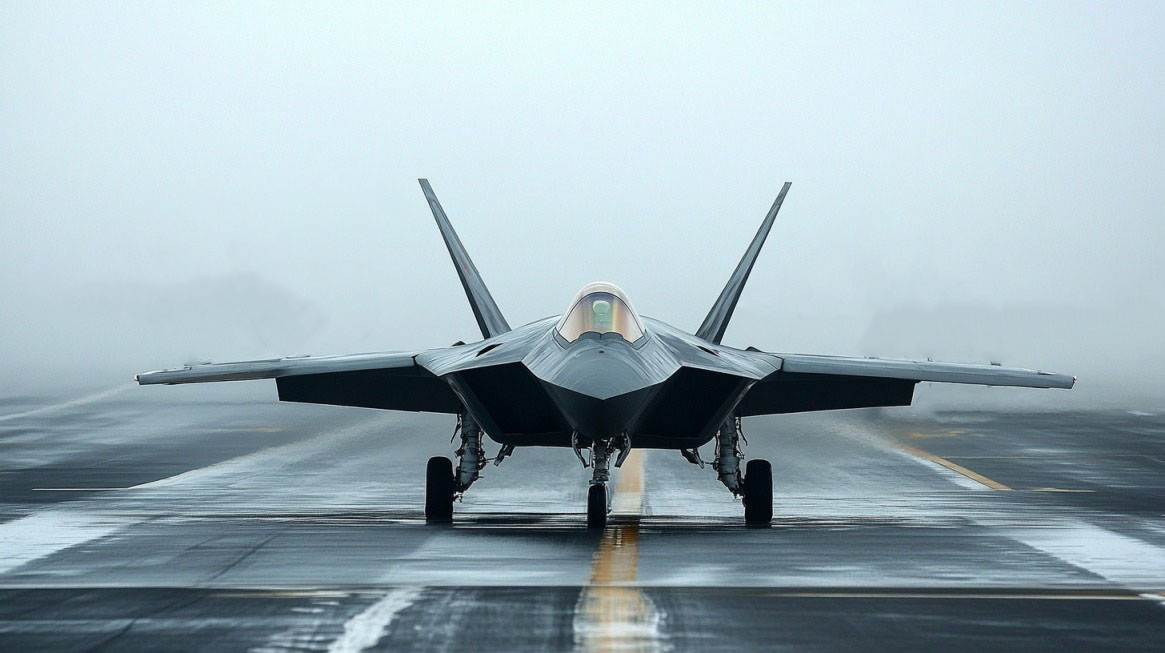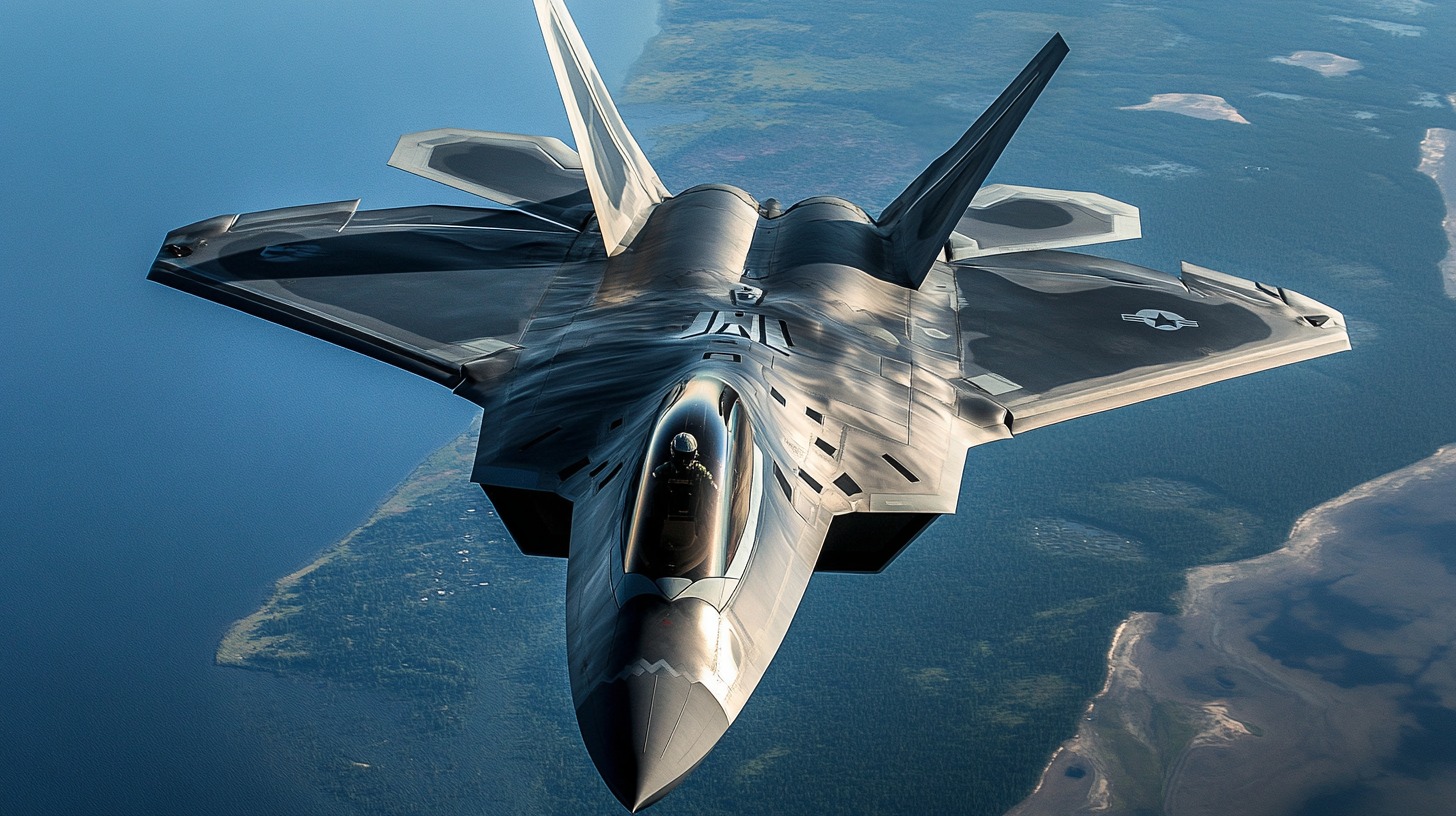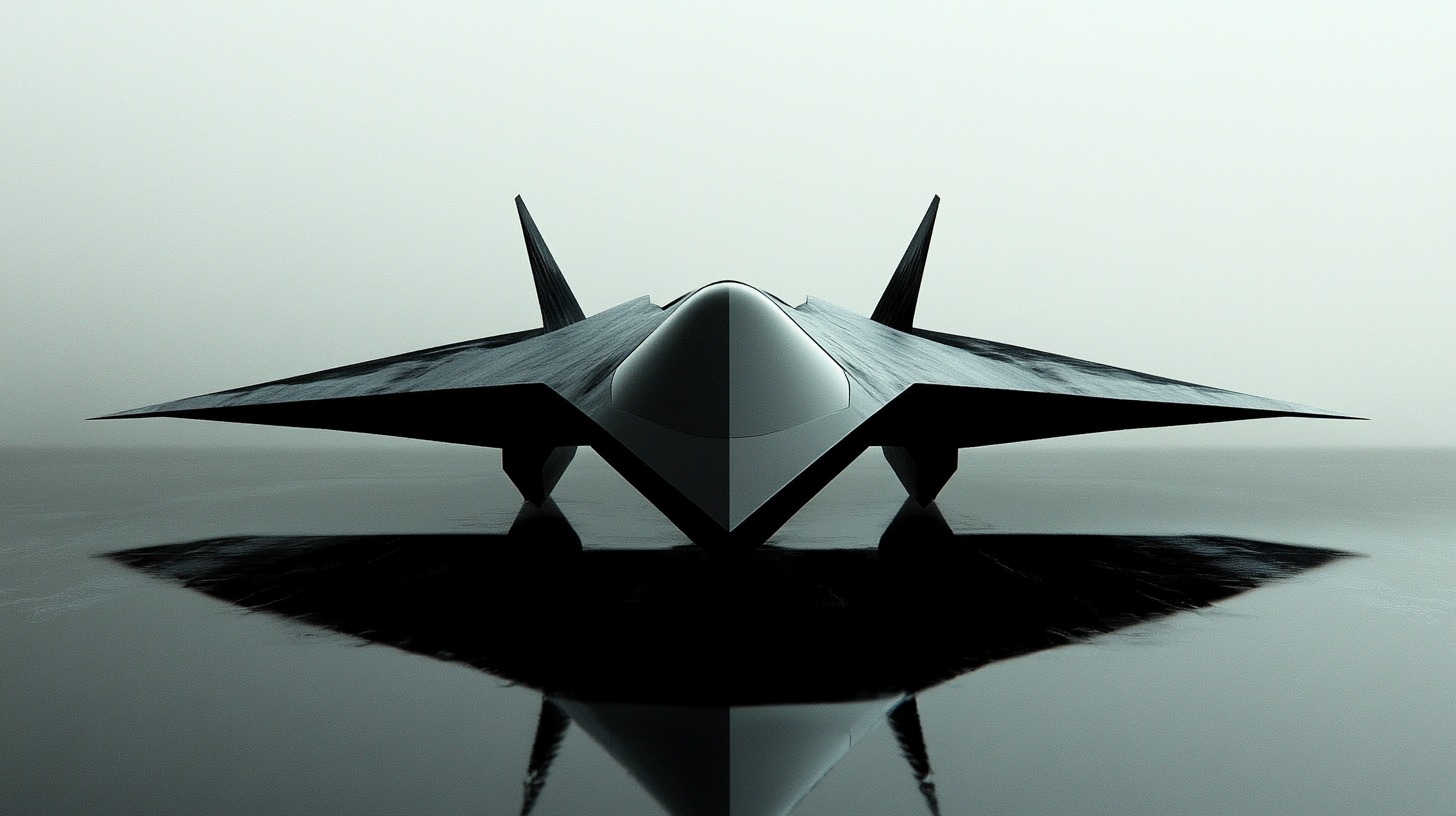Stealth technology refers to techniques used in aircraft to reduce detectability by radar, infrared, and other detection systems.
Contrary to sci-fi interpretations, it does not make aircraft invisible, but rather harder to track or target. Its primary purpose is to gain air superiority by entering and exiting hostile territory without detection.
Concepts of reduced visibility began surfacing as early as WWI and WWII. Examples include aircraft with Cellon coatings and the German Horten Ho 229 flying wing.
Stealth reached a new phase in the 1970s with Lockheed’s F-117 Nighthawk, designed with angular surfaces and radar-absorbent materials to confuse enemy radar.
The Science Behind Stealth
Stealth aircraft rely on scientific principles rooted in physics, particularly the manipulation of electromagnetic waves. Radar systems detect objects by sending out radio waves and measuring the strength and timing of the return signal.
When those waves strike a target, some bounce directly back to the radar source, alerting operators to an object’s presence and location.
Radar Cross-Section (RCS) is a critical measurement in this process. RCS refers to how much radar energy an object reflects toward the source.
Large metallic objects with flat or curved surfaces, like conventional aircraft, create strong radar echoes, making them easy to detect. Reducing RCS is at the heart of stealth technology.
To minimize RCS, engineers focus on geometry. Surfaces on stealth aircraft are carefully angled to redirect radar waves away instead of bouncing them back.
A classic example is the faceted design of the Lockheed F-117, which uses flat triangular panels arranged to scatter radar signals in multiple directions. Even a small curve or edge out of alignment can significantly increase radar visibility.
One practical demonstration involves basic physics experiments that show how light or radio waves bounce differently off various shapes.
China’s 6th-Gen Stealth Fighter Takes First Flight: A New Era in Aerial Combat https://t.co/NsLlGx87hG
— SSBCrack (@SSBCrack) December 27, 2024
- Flat, angled surfaces scatter waves more effectively than curved or rounded shapes.
- Smooth transitions between surfaces help avoid sudden reflections.
- Protruding elements, like antennae or vertical tails, act as reflectors and compromise stealth.
In addition to shape, materials play a major role in stealth capability. Aircraft traditionally constructed with aluminum or steel reflect radar efficiently.
Stealth aircraft use composite materials such as carbon fiber or fiberglass, which absorb some radar energy instead of reflecting it.
Interesting Fact: During Kosovo War, a Serbian commander shot down a supposedly “invisible” U.S. F-117 Nighthawk stealth bomber using a 1960s-era missile system.
Key Stealth Design Principles
Modern stealth aircraft achieve reduced detectability not by magic but by mastering physics and clever engineering.
Every feature, from shape to heat signature, is chosen to interfere with enemy tracking systems.
Airframe Geometry and Internal Configuration

Shape leads stealth defense by controlling how radar waves interact with an aircraft. Conventional designs reflect signals because of features like vertical stabilizers, sharp corners, and exposed equipment.
Stealth designers reject these familiar elements and reshape everything with invisibility in mind.
- Replacing vertical stabilizers with slanted twin tails or removing them entirely to reduce vertical radar reflection.
- Shaping wings and fuselages with flat, angular surfaces that deflect radar energy away instead of bouncing it back.
- Avoiding smooth curves, which often reflect radar directly to its source and increase visibility.
Weapons and engine layout follow strict stealth logic:
- Storing weapons internally and sealing bay doors until deployment prevents the radar exposure that external hardpoints would cause.
- Burying engines within the fuselage cuts down both radar reflection and heat signature.
Engine intake and exhaust areas receive additional treatment:
- Shaping air intakes to block straight-line paths to radar beams.
- Masking exhaust vents with overhanging panels or routing them through S-shaped ducts to confuse both radar and infrared tracking.
Surface Materials and Thermal Signature Control
Surface materials and coatings help keep aircraft hidden. Metal reflects radar too well, so stealth aircraft often use composite materials. These have microscopic structures designed to absorb radar waves and convert them into heat energy too weak to detect.
Paint is more than just a color choice. Radar-absorbent coatings contain special chemical compounds that interact with electromagnetic energy, dissipating it before it can reflect back.
Most stealth aircraft are painted in flat, matte finishes, gray, black, or muted colors, to prevent glare and reduce visibility to both radar and the human eye.
- Composite skin panels provide both structure and stealth.
- Special paints act as radar sponges, reducing return signals.
- Seamless surfaces avoid gaps where radar can bounce.
Heat emission is another giveaway. Jet engines produce large infrared signatures. A glowing hot exhaust trail is a clear target for infrared-guided missiles. Designers mitigate this by cooling the exhaust or redirecting it.
- Exhaust nozzles are shaped to mix hot gases with ambient air quickly.
- Some aircraft route exhaust along the top of the fuselage to hide it from below.
- High-speed operation is often limited, since speed increases surface heating.
All these details combine to make modern stealth aircraft hard to detect, track, and engage. Shape and surface work together as the foundation of invisibility.
Multispectral Stealth
Modern stealth aircraft must survive in environments flooded with sensors, not just radar. Traditional radar-evading designs only solve part of the problem.
Detection systems now span multiple spectrums, infrared, acoustic, visual, and each can expose an aircraft during critical phases of a mission.
To stay concealed, engineers apply multispectral stealth strategies that address each of these detection methods with targeted solutions.

Concealing the Visual Profile
Reducing visibility to the naked eye plays an essential role during daytime missions or low-altitude operations.
Fighter jets and bombers no longer rely solely on radar invisibility; they must also vanish into the sky or terrain.
- Paint schemes in muted grays, blues, or camouflage patterns reduce contrast against sky or terrain.
- Matte coatings eliminate reflections caused by sunlight or artificial illumination.
- Surface contours are carefully shaped to avoid casting harsh shadows or highlighting distinct outlines.
Some aircraft are designed with optical alignment in mind—edges line up to confuse or blur outlines at a distance.
Angles and curves are adjusted to reflect light in non-obvious directions, especially effective during twilight or dawn missions.
Reducing Infrared and Acoustic Signatures
Heat and sound often betray stealth aircraft. Targeting pods, missiles, and advanced ground systems lock onto thermal signatures with alarming accuracy.
To stay hidden, design decisions must take heat emissions into account.
- Engine nozzles shaped to mix hot exhaust with cooler air.
- Exhaust paths routed above the wings or shielded by fuselage elements.
- Flight altitudes and speeds optimized to reduce friction and skin heating.
Some aircraft even employ specialized cooling systems to lower overall surface temperature. Infrared seekers searching for hot spots are left with little to detect.
Sound can also alert adversaries. Even with radar and infrared stealth in place, a noisy engine can give away a position.
- S-duct inlets that block direct engine noise from escaping forward.
- Internal acoustic dampening materials to absorb mechanical vibrations.
- Low-bypass engines tuned for minimal sound at cruise speeds.
Together, these elements help aircraft move through contested airspace without triggering passive detection systems.
Multispectral stealth is not a single solution but a combination of many deliberate decisions. Each design feature—from paint color to exhaust placement—contributes to an aircraft’s ability to remain undetected in a modern theater of war.
The Strategic Value of Stealth
Stealth provides a decisive tactical edge in both reconnaissance and combat operations. Aircraft designed with stealth principles can enter heavily defended areas without activating radar warning systems or triggering surface-to-air missile responses.
Surprise becomes a powerful weapon, allowing missions to proceed with minimal interference or retaliation.
Flying undetected enables real-time surveillance missions in contested environments. Pilots can maneuver closer to enemy installations, observe troop movements, and gather electronic signals without risking immediate counterattack.
Intelligence gathered under these conditions tends to be more accurate and timely, supporting better decisions at both tactical and strategic levels.
Early detection of enemy activities or infrastructure becomes possible, helping commanders pre-empt threats before they escalate.
Stealth capability also supports force projection. By operating without detection, militaries can deploy air assets in ways that deter adversaries without direct confrontation. The mere possibility of stealth aircraft in the vicinity can cause an opponent to alter movements, delay plans, or expend resources on countermeasures.
Exclusive: Inside the making of the military’s new stealth bomber, the B-21 Raider https://t.co/Lmxft5vhqq pic.twitter.com/ux2Wedb1p7
— TIME (@TIME) December 6, 2022
The Bottom Line
Stealth has changed how modern air forces approach threats and defense.
By combining geometry, advanced materials, heat reduction, and sound suppression, aircraft achieve remarkable levels of concealment.
It reflects a fusion of physics, engineering, and strategy that redefines air combat.







